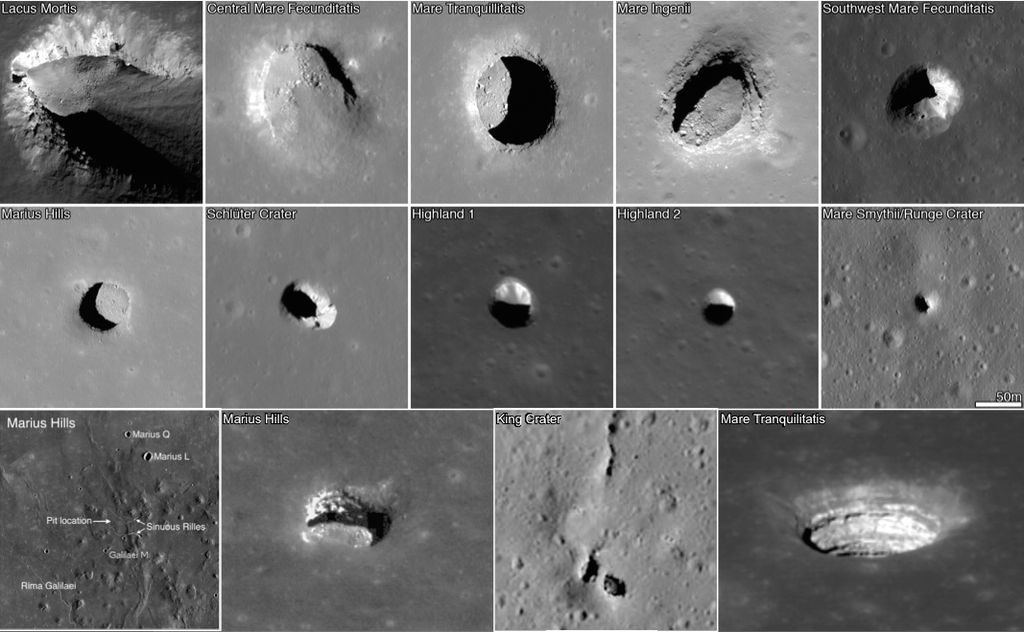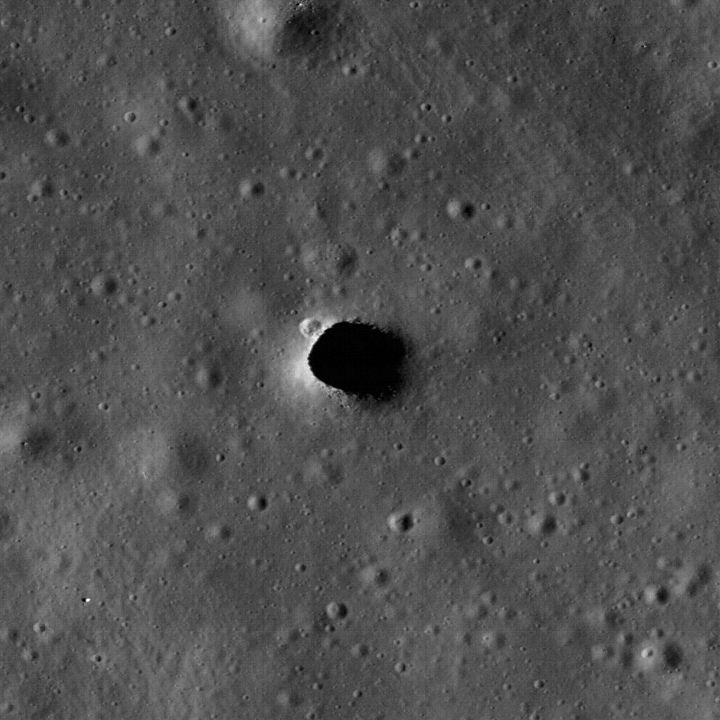
Just because we live next to the moon, doesn't mean there aren't mysteries to be solved. What the heck is with that hovering dust that scientists see at the day-night line? How come some of the rocks are magnetic, when the moon itself has no larger field? And what the heck is inside that pit at the top of the image?
Welcome to moon caves. These pits could show us a little about what the "insides" of the moon look like. How they formed is a little fuzzy, but it might have been from collapsing ground over lava flows.
Here's the challenge, however; you can't just send something into it. What if it doesn't come out? The equivalent of the Martian Curiosity rover on the moon would just fall and smash into pieces. Maybe we can parachute another probe into there that is more flexible, but then it would be difficult to transmit information given that it's underground and all.

A selection of pits and caves on the moon. Credit: NASA
Here's where technology comes in, with lasers. If we could send a tiny camera and a laser-shooter into one of these pits, in theory you could bounce the laser light off the walls and collect the remaining photons with the camera. It's a collaboration between the Morgridge Institute for Research and the University of Wisconsin-Madison as part of a larger program called NASA Periscope.
"Geologists are interested because they would provide access to subsurface geology without actually having to dig, which would be very difficult," said Andreas Velten, a Morgridge medical engineering affiliate and scientist with the University of Wisconsin-Madison, in a press release. "There is potential for the discovery of water or other trapped volatiles under the surface."
And of course, the benefits don't end there. If we can peer into caves on the moon, we certainly can use the same technology here on Earth for geological mapping, hunting for resources or perhaps for rescue operations.
But it'll take a new generation of grappling rovers to get into these caves, something the press release says that NASA's Jet Propulsion Laboratory is working on. Is it truly possible? We won't know without a lot more funding and some testing, but it's worth a shot.
Have a neat application for lasers? Let us know by launching a HeroX challenge.
Top image: This moon cave (in the Marius Hills) is big enough to hide the White House, according to NASA. Credit: NASA/ LROC/ ASU








